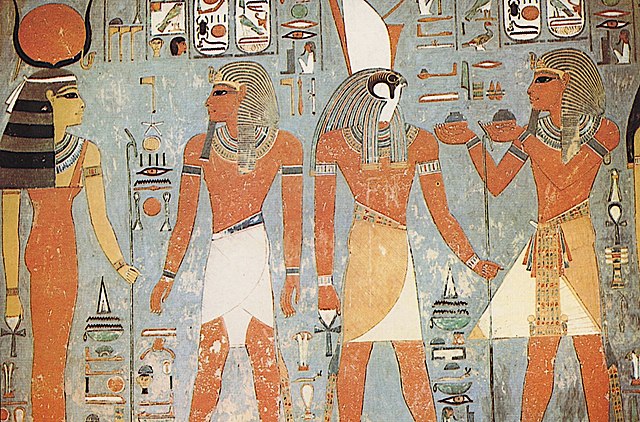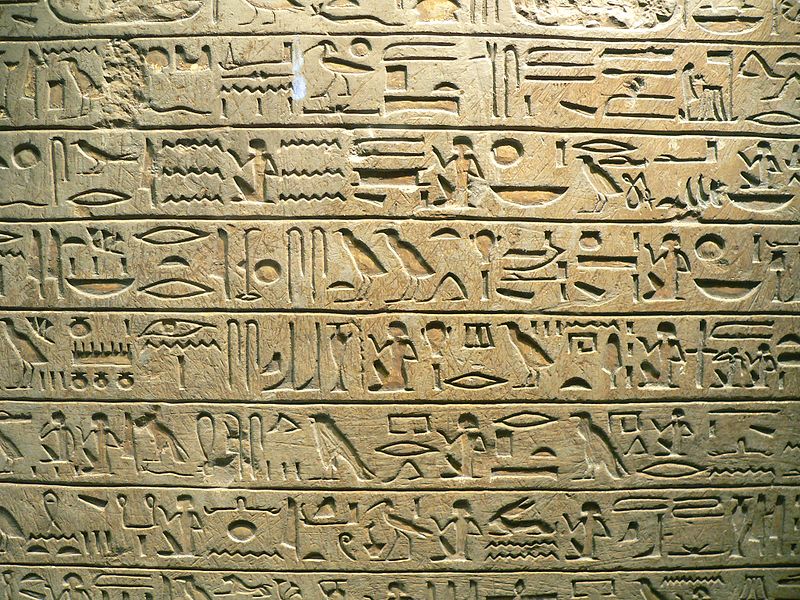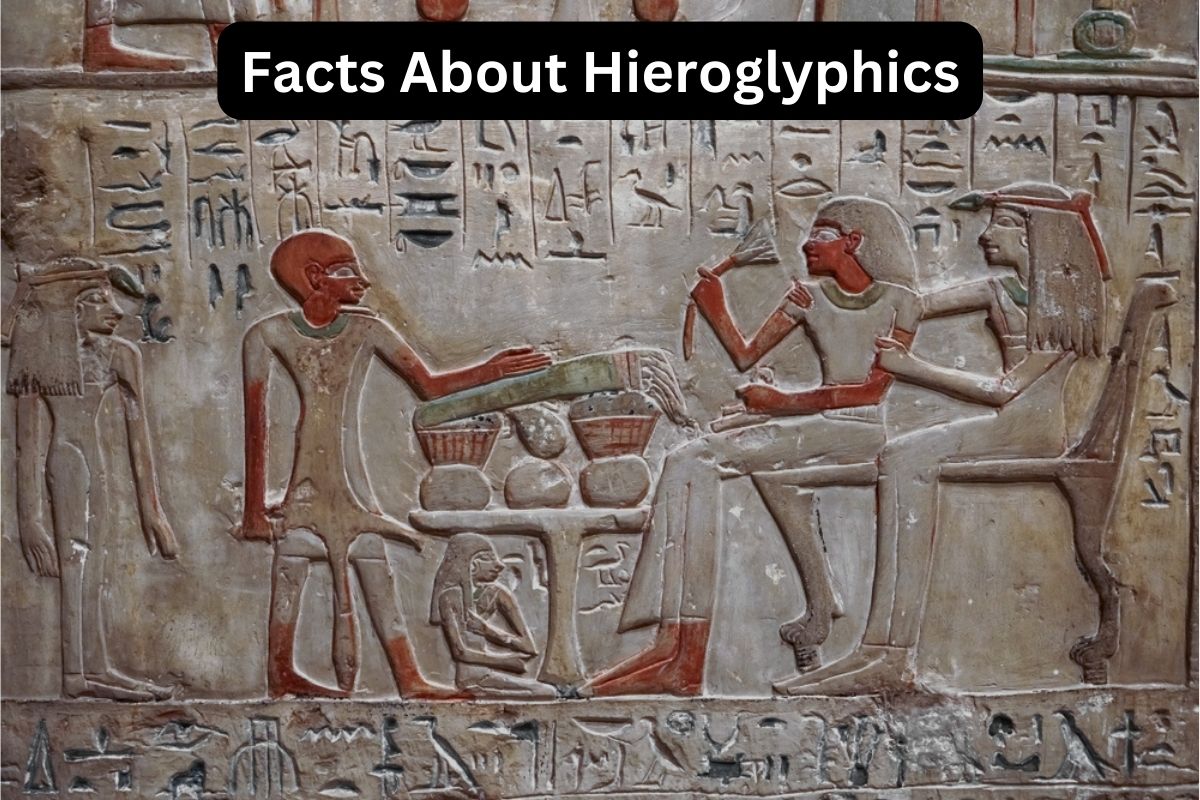Hieroglyphics, the ancient Egyptian system of writing, are a fascinating and intricate script that has captivated scholars and enthusiasts for centuries.
Derived from the Greek words “hieros” meaning “sacred” and “glyphein” meaning “to carve,” hieroglyphics were primarily used for religious and monumental inscriptions.
The script emerged during the Early Dynastic Period and evolved over thousands of years, reaching its peak during the Old Kingdom. Hieroglyphics combined logographic, syllabic, and alphabetic elements, using a vast array of signs to represent sounds, words, or concepts.
Deciphered in the 19th century by Jean-François Champollion, the study of hieroglyphics has provided valuable insights into ancient Egyptian culture, history, and religion.
While not commonly used in everyday life, hieroglyphics adorned temples, tombs, and important structures, offering a glimpse into the pharaohs’ power and religious beliefs.
Today, hieroglyphics continue to be studied, shedding light on the rich legacy of one of the world’s greatest ancient civilizations.
Hieroglyphics Facts
1. Hieroglyphics are a system of writing used by ancient Egyptians
Hieroglyphics were a system of writing unique to the ancient Egyptians.
Hieroglyphics were not the only script used in ancient Egypt. The Egyptians also used other scripts such as hieratic and demotic, which were simplified and cursive versions of hieroglyphics.
However, hieroglyphics were the most formal and prestigious script, reserved for important texts and elaborate inscriptions.

2. Hieroglyphics were used primarily for religious and monumental inscriptions
The term “hieroglyphics” is derived from the Greek words “hieros” meaning “sacred” and “glyphein” meaning “to carve.” The name reflects the fact that hieroglyphics were predominantly used for sacred or monumental inscriptions.
3. The earliest known hieroglyphic inscriptions date back to the Early Dynastic Period of ancient Egypt, around 3200 BCE
The origins of hieroglyphics can be traced back to the Early Dynastic Period of ancient Egypt, which began around 3200 BCE. At this time, the script was still in its early stages of development and consisted of simple pictorial representations of objects.
Over time, the script became more standardized and complex, incorporating both pictorial and abstract signs.
The Old Kingdom (2686-2181 BCE) marked a significant phase in the evolution of hieroglyphics. During this period, the script became more refined and sophisticated, with the introduction of new signs and a more standardized arrangement of texts.
The Old Kingdom inscriptions provide valuable insights into the religious beliefs and royal rituals of the time.
4. Hieroglyphics consist of a combination of logographic, syllabic, and alphabetic elements
Hieroglyphics encompassed a combination of logographic, syllabic, and alphabetic elements. The script comprised hundreds of individual signs, known as hieroglyphs, which could represent sounds, words, or concepts.
Some hieroglyphs represented complete words or ideas, while others represented individual sounds or syllables.
5. The hieroglyphic script was deciphered in the early 19th century by French scholar Jean-François Champollion
The decipherment of hieroglyphics was a significant breakthrough in understanding ancient Egyptian culture and history. The process of decipherment was led by Jean-François Champollion, a French scholar, in the early 19th century.
Champollion’s key breakthrough came with the discovery of the Rosetta Stone, a stele with inscriptions in three different scripts: hieroglyphics, demotic, and Greek.
Also Read: Facts About the Rosetta Stone
Using his knowledge of the Coptic language, which had evolved from ancient Egyptian, and comparing the Greek text on the Rosetta Stone with the hieroglyphic and demotic texts, Champollion was able to identify several shared words.
By deciphering these shared words and utilizing their phonetic values, he gradually unlocked the phonetic values of many hieroglyphic signs.
Champollion’s work paved the way for further decipherment and understanding of the ancient Egyptian script. It opened up access to a vast wealth of ancient Egyptian texts, shedding light on their religious beliefs, historical events, and daily life.

6. Hieroglyphics were written depending on the direction in which the figures or animals faced
Hieroglyphics were written based on the direction in which the figures or animals faced. If a hieroglyphic character faced right, the text would generally be written from right to left.
Conversely, if a character faced left, the text would typically be written from left to right. This directional aspect ensured that the characters aligned with the direction the figures or animals faced, providing visual coherence to the script.
Vertical writing was also used when necessary. Understanding this aspect is important for interpreting ancient Egyptian inscriptions accurately.
7. Hieroglyphics were not commonly used in everyday life
Hieroglyphics were not extensively used in everyday life or for common communication. Instead, they were primarily employed for monumental and ceremonial purposes. Hieroglyphic inscriptions adorned the walls of temples, pyramids, and tombs, serving as a visual representation of the pharaoh’s power, religious devotion, and connection to the gods. The elaborate and intricate nature of hieroglyphics made them suitable for grand architectural and artistic displays.
8. The hieroglyphic script was used for over 3,000 years, from the Early Dynastic Period to the end of the Ptolemaic Period (4th century BCE)
The use of hieroglyphics spanned over a vast period of time, covering more than 3,000 years of ancient Egyptian history.
The script emerged during the Early Dynastic Period (around 3200 BCE) and continued to be used until the end of the Ptolemaic Period (4th century BCE) when Egypt fell under Greek rule.
The longevity of hieroglyphics is a testament to its importance and cultural significance throughout ancient Egyptian civilization.
9. The decipherment of hieroglyphics provided valuable insights into ancient Egyptian culture, history, and religion
The decipherment of hieroglyphics provided valuable insights into various aspects of ancient Egyptian culture, history, and religion.
By understanding the meanings behind hieroglyphic inscriptions, scholars were able to uncover information about the pharaohs, their dynasties, and the divine rituals that shaped their society. Hieroglyphics also revealed details about daily life, societal structure, agriculture, art, and technological advancements of ancient Egypt.
Additionally, the study of hieroglyphics shed light on the religious beliefs and mythology of the ancient Egyptians. The texts and inscriptions uncovered through decipherment provided information about their gods, creation myths, funerary rituals, and beliefs about the afterlife.
It deepened our understanding of their complex religious worldview and their practices centered around death and the journey to the afterlife.
10. Today, hieroglyphics are primarily studied by Egyptologists, historians, and archaeologists
Today, hieroglyphics continue to be studied and researched by Egyptologists, historians, linguists, and archaeologists. The deciphered hieroglyphic texts are invaluable sources of information for understanding and reconstructing ancient Egyptian history.
They provide direct insights into the language, writing system, and cultural practices of this remarkable civilization.
Hieroglyphics are also of immense historical and cultural significance. The study of hieroglyphics allows us to appreciate the artistic and aesthetic achievements of ancient Egypt, as the script is intricately intertwined with their visual arts. Hieroglyphic inscriptions, often accompanied by detailed pictorial representations, showcase the skill and craftsmanship of ancient Egyptian artisans.
